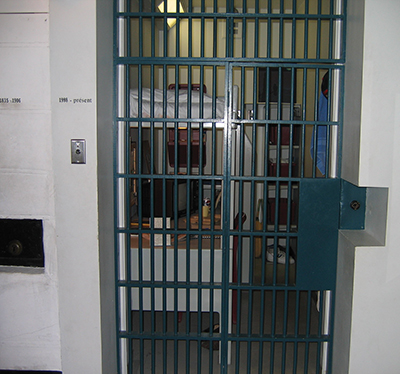Does Your Preventative Maintenance Need a Retrofit?
By Daedalus Howell
STEVENSVILLE, Md.— Stay in any industry long enough, and one will witness a cavalcade of philosophies and their corresponding jargon parade in and out of fashion. One such term, “preventative maintenance,” has long been embraced by the corrections industry, but it is also undergoing an evolution in the way it’s implemented.
The most succinct definition of preventive maintenance comes courtesy of Australia’s Asset Management & Maintenance Journal: “In the most theoretical sense, Preventive Maintenance is any maintenance activity that is performed to prevent a piece of equipment from failing.”
Easy-peasy, right?
Indeed, implementation of preventative maintenance programs in the nation’s correctional facilities has been the dominant means of realizing the potential of a capital investment. Moreover, it spurred something of a preventive maintenance economy as companies and contractors sprang up to which such activities could be outsourced. As states and counties have faced budget issues, however, preventative maintenance programs have begun to shift back in-house, as it were, with an array of new possibilities emerging as the trend takes hold.
“Originally, facilities relied heavily on outside contractors. Now, facilities are becoming more self-sufficient and also centralizing their own resources with other facilities,” observed Paul Trotta, vice president of Jailcraft Inc., based in Stevensville, Md. “Preventive services were very popular and have since declined.”

In their place, Trotta sees a trend toward retrofitting outmoded or damaged equipment with new, more sustainable solutions. Will “retrofit” become an industry buzzword? Probably not. Since its coinage as a portmanteau of sorts of “retroactive” and “refit” back in the 1950s, it’s had every opportunity to become so in the intervening 70 years — and nada. If anything, the trend Trotta has witnessed is akin to a more recent buzzword — disruption — as an entire modality of facility maintenance gives way to an emerging, perhaps less doctrinaire, approach.
“We have actually seen less interest and spending on maintenance and retrofitting solutions. Too many facilities allow the condition of the equipment to deteriorate to a point where simple maintenance and repairs are no longer a solution. Preventive maintenance and equipment inspections will prolong the life and reliability of your equipment,” said Trotta, who is quick to add, “Just because you see a door open and close does not mean it may be operating correctly or 100 percent secure.”
Among the services Jailcraft has proffered since its founding in 1977 is identifying old, obsolete or unmarked parts and then recommending an appropriate replacement or retrofit solution. Whereas preventative maintenance might have prolonged the detention equipment’s life cycle, the fact remains that deterioration is inevitable.
Unlike consumer-grade products whose manufacturers sometimes bake in “planned obsolescence” as an invisible and unwanted feature (iPhone X anyone?), detention-grade equipment is produced with the understanding that it is built to last. And yet deprecation — whether at the hands of natural law or, as likely, at the hands of those on the wrong side of the law for whom the equipment was produced — will occur. In this regard, preventative maintenance is fighting a noble, if impossible, battle.
For their part, Trotta and his likeminded colleagues just get the job done. In a scenario certainly familiar to facility managers, a detention center client was having problems with their obsolete sliding cell doors: “Individual repairs were becoming too numerous and costly,” recalled Trotta. “We recommended and later performed retrofits on the sliding door operators. This saved the client money by utilizing the existing doors and operator housings while providing them with new and reliable door operators.”

In economics, the behavior of the aforementioned client — making costly, repeated repairs — is an example of “sunk cost fallacy.” This is the misconception that one is making rational decisions based on the future value of objects (like cell doors), when in fact, the decisions are colored by experience with the accumulating investment. Basically, the more one invests in something, the more difficult it is to let it go.
To read the entire article, check out the November/December issue of Correctional News.

